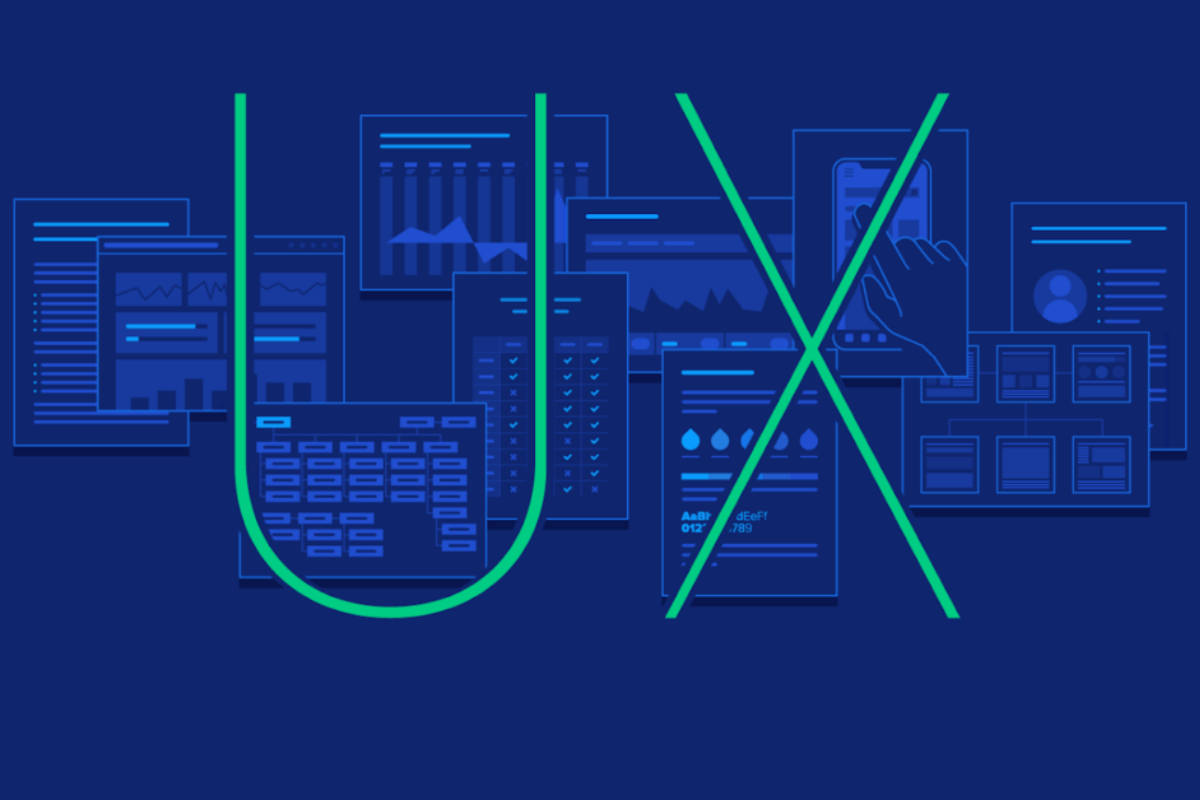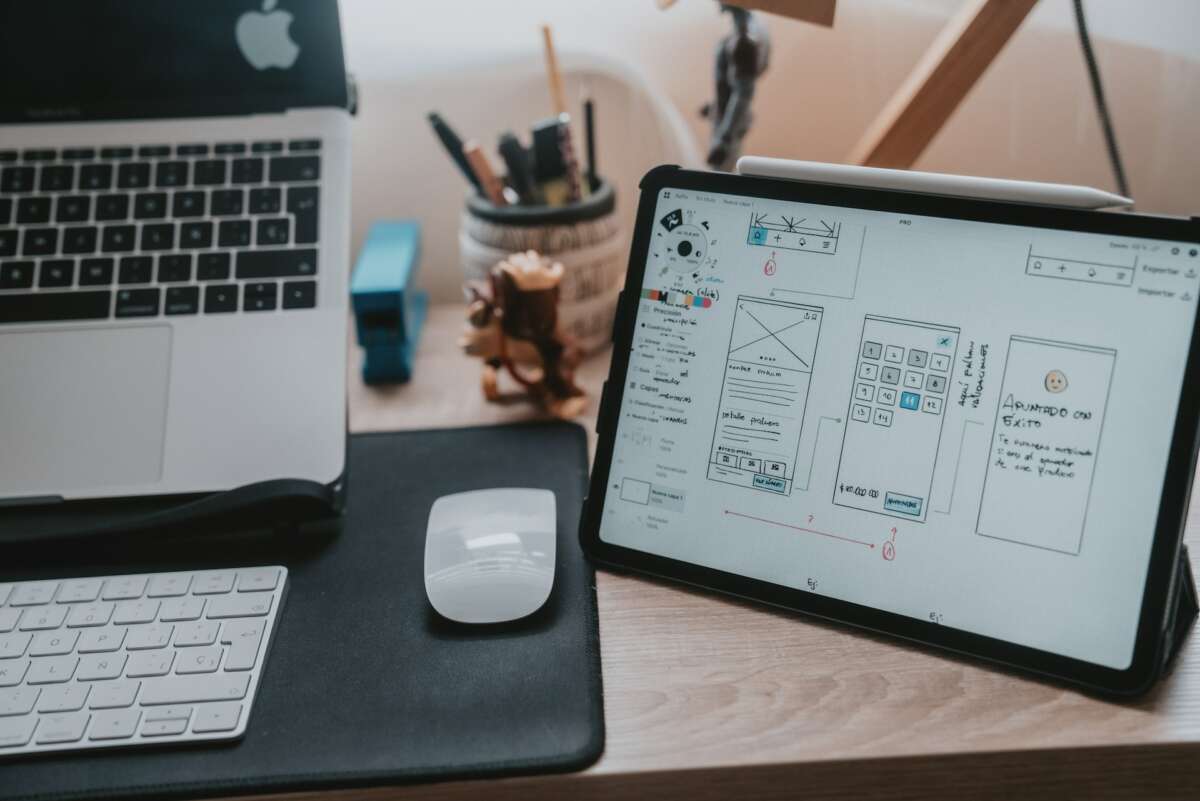
8 UX Design Frameworks Every UX Designer Should Know
Posts by Alan TaylorJuly 6, 2023
UX design frameworks are an invaluable tool for developers, designers, and anyone involved in user experience.
By providing a structured approach to web design that combines existing paradigms with best practices, UX design frameworks can help create engaging online experiences that meet the needs of users while increasing their satisfaction and loyalty.
In this article, we’ll discuss eight different UX design frameworks –Agile UX, Hooked Model, The UX Honeycomb, Design Thinking, The Fogg Behavior Model, Double Diamond, BASIC Framework, and Lean UX – and how they can be used to improve user experience.
What Are UX Design Frameworks And Are They Important?
UX design frameworks are an essential part of the web design process. Combining existing design paradigms with a structured way of thinking, UX design frameworks provide a valuable tool for developers, designers, and anyone involved in user experience.
By combining research, visual elements such as icons, fonts and images, interactions, social patterns, and usability testing into a cohesive framework of best practices, UX designers can create engaging online experiences that help to increase user satisfaction and loyalty.
A well-executed UX design framework can make all the difference when it comes to delivering an optimal digital experience – making them crucial to success when it comes to web projects.
1. Agile UX
Agile UX is an incredibly useful tool for any UX designer worth their salt. It emphasizes continuous collaboration between the different members of a development team, such as developers and marketers, to ensure a product is designed with the best user experience in mind.
In Ajax-driven applications, sprint-driven development cycles are used to facilitate rapid iteration and decrease the time to market.
This design framework has been proven to reduce unnecessary expenditures due to its focus on rapidly progressing applications and systems while testing them through sound research analysis.
Agile UX is quickly becoming one of the most sought-after UX design frameworks among professionals in the field, so learning its principles and advantages can prove essential for any successful UX designer.
2. Hooked Model
Third on the list of UX design frameworks that every designer should know is the Hooked Model.

Perfectly named, this approach focuses on understanding the full user experience when the user interacts with a product or service – ‘hooking’ them in, and keeping their interest sustained.
This model revolves primarily around creating positive experiences during use, which draws users back to the product or service over and over again, rather than using negative reinforcement such as notifications or pushy messages.
The ways this can be achieved are multi-dimensional; introducing new content, frequent interactions through rewards, and exclusivity for instance.
A great example of the successful implementation of the Hooked Model was done by Duolingo, who cleverly dished out rewards and limited-time offers to motivate users to continue engagement with their platform.
If you’re considering incorporating this type of user-experience-focused framework into your design process, it’s definitely worth exploring!
3. The UX Honeycomb
The UX Honeycomb is a relatively newer framework that provides a simplified approach to UX Design with its simple three-part structure. At its core, it consists of seven key elements:
- Usability
- Accessibility
- Desirability
- Findability
- Credibility
- Value
- Delight
These seven pieces form the building blocks to creating an engaging user experience that not only looks good but also feels good.
Used together, they create something that’s both intuitive and powerful – making the design process easier for beginners and experts alike. So if you’re starting out in the world of UX Design, don’t forget about The UX Honeycomb – it could be just what you need to finally break into the industry!
4. Design Thinking Process
A user-centered iterative framework, the design thinking process has five stages:
- Empathize: find out what your users need by empathizing
- Define: identify the issue you want to resolve
- Ideate: create potential remedies for issues faced by users
- Prototype: make prototypes
- Test: with users and stakeholders, test your prototypes,
As with any framework, it is always important to iterate which in turn allows designers to understand user needs, collaboratively brainstorm solutions, and build prototypes based on feedback.
With the Design Thinking Process as the foundation of your work, success in UX will not be far away!
5. The Fogg Behavior Model
The Fogg Behavior Model, developed by BJ Fogg of Stanford University, offers a unique perspective on UX design.
It views human behavior as a three-step process – motivation, ability, and trigger – which are influenced by factors such as level of interest and difficulty in a given task.
This model helps UX designers craft an experience that is both interesting and achievable for users, giving them the motivation to perform actions or take specific steps.
What’s even more impressive is that this model traces right down to the micro-interactions that comprise any given user journey or product workflow.
UX designers hoping to improve the usability of their projects would do well to study this framework closely!
6. Double Diamond
Double Diamond is an invaluable UX design framework that helps designers determine their priorities and better solve problems.
Through a series of steps, the Double Diamond process leads to results that can be tested and iterated on.
Starting with the “diverge” step, this framework encourages analysis of a given problem from multiple perspectives by sketching ideas, brainstorming solutions, and exploring alternative approaches.
After gathering a wealth of information from diverging, designers are then able to hone in on the best solution with the “converge” step.
Here they evaluate the various ideas and solutions thought up during the diverge stage before narrowing in on one final concept.
UX designers should keep Double Diamond in mind as it serves as an integral tool for generating creative solutions to just about any problem.

7. BASIC Framework
Sixth on the list is the BASIC Framework. An acronym for Behavior, Appearance, Structure, Interaction, and Credibility, the BASIC Framework focuses on user feedback from five perspectives.
This framework was developed to assist a designer in forming a user-centric design, as it allows users to interact with a product in different ways, depending on how it looks and feels.
The overall objective of this framework is to understand why users are interacting with an interface and also how their experiences influence each other.
A great choice for those looking to build out an engaging user interface experience, the BASIC Framework certainly deserves attention from every UX designer.
8. Lean UX
The fourth UX Design Framework to get familiar with is Lean UX. The goal of Lean UX is to minimize waste due to long design cycles that can’t keep up with user needs.
It stands out because it promotes collaboration over production and encourages focusing on continuous delivery. It was inspired by agile software development in which businesses are constantly responding to customer feedback, making changes quickly, and iteratively testing solutions.
As such, Lean UX serves well for companies dealing with rapid iteration cycles, emphasizing the importance of constant feedback from users in order to stay relevant.
If you’re looking for a quicker way to make sure your product meets the needs of your users, then Lean UX may be just the framework you have been looking for.
Furthermore, if you need more information or professional help in this area, you can contact Eleken. They can help you with UX design frameworks like Lean UX or others.
Conclusion
In conclusion, UX Design Frameworks are invaluable tools that can assist UX designers to create an engaging user experience.
By focusing on the needs of their users and leveraging different frameworks, designers can develop products and services that are both efficient and effective.
Some of the most popular frameworks for UX Design include Lean UX, Agile UX, the BASIC Framework, the UX Honeycomb, and the Fogg Behavior Model.
Each framework has its own strengths and weaknesses, so it’s important to understand which is best for any given project before diving in.
With a little research and practice, UX Designers can become proficient in leveraging these frameworks to create amazing user experiences!
